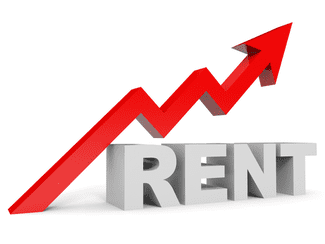Rents are up more than 30 percent in some cities, forcing millions to find another place to live
Rising rents are expected to be a driving force in inflation this year and have been an ongoing policy challenge for the Biden administration.
“I am trying to figure out what I can do,” said Age, 32, who also has an 8-year-old daughter. “Rent is so high that I can’t afford anything.”

Average rents rose 14 percent last year, to $1,877 a month, with cities like Austin, New York and Miami notching increases of as much as 40 percent, according to real estate firm Redfin. And Americans expect rents will continue to rise — by about 10 percent this year — according to a report released this month by the Federal Reserve Bank of New York. At the same time, many local rent freezes and eviction moratoriums have already expired.
“Rents really shot up in the second half of 2021,” said Daryl Fairweather, chief economist at Redfin. “The pandemic was kind of a pause on the economy and now that things are reopening, inflation is picking up, rents are going up and people are realizing they don’t have as much disposable income as they might have thought they had.”
Higher rent prices are also expected to be a key driver of inflation in coming months. Housing costs make up a third of the U.S. consumer price index, which is calculated based on the going rate of home rentals. But economists say there is a lag of 9 to 12 months before rising rents show up in inflation measures. As a result, even if inflation were to subside for all other components of the consumer price index, rising rents alone could keep inflation levels elevated through the year, said Frank Nothaft, chief economist at real estate data firm CoreLogic.
While the Federal Reserve’s likely interest rate increases are expected to slow soaring housing costs — already mortgage rates have been trending higher, which tends to cool the real estate market — the restraint on rental prices is expected to be much less direct and take longer to filter through.
In the meantime, the Biden administration has begun reallocating unused funds from its $46.5 billion Emergency Rental Assistance program to help residents with rent and utility payments in cities such as Washington, D.C., Houston and San Diego. President Biden has also vowed to add nearly 100,000 affordable homes over the next three years by providing low-cost funding to qualifying developers, and encouraging states and local governments to reduce zoning and financing rules for affordable housing.
The pandemic has exacerbated inequalities in many parts of life, and housing is no different. Homeowners benefited from rock-bottom interest rates and surging home prices, while renters have faced surging costs with little reprieve. And unlike markups in other categories — such as food or gas, where prices can waver in both directions — economists say annual leases and long-term mortgages make it unlikely that housing costs will come back down quickly once they rise.
Eleven million households, or 1 in 4 renters, spend more than half of their monthly income on rent, according to an analysis of 2018 census data by Harvard University’s Joint Center for Housing Studies, though experts say that figure is likely even higher now.
“The fact is, for too many Americans, housing is unaffordable,” said Dennis Shea, executive director of the J. Ronald Terwilliger Center for Housing Policy at the Bipartisan Policy Center. “We have an inadequate supply of homes — for both rent and for sale — and of course the lowest income families are being hit hardest.”
In interviews with renters around the country, many said their monthly payments had recently risen or were set to go up in the coming weeks. Multiple people said that despite local rent freezes, their management companies had found ways to increase monthly dues by tacking on new “amenity fees” or charging for services like trash collection that had previously been included.
















 Accessibility
Accessibility